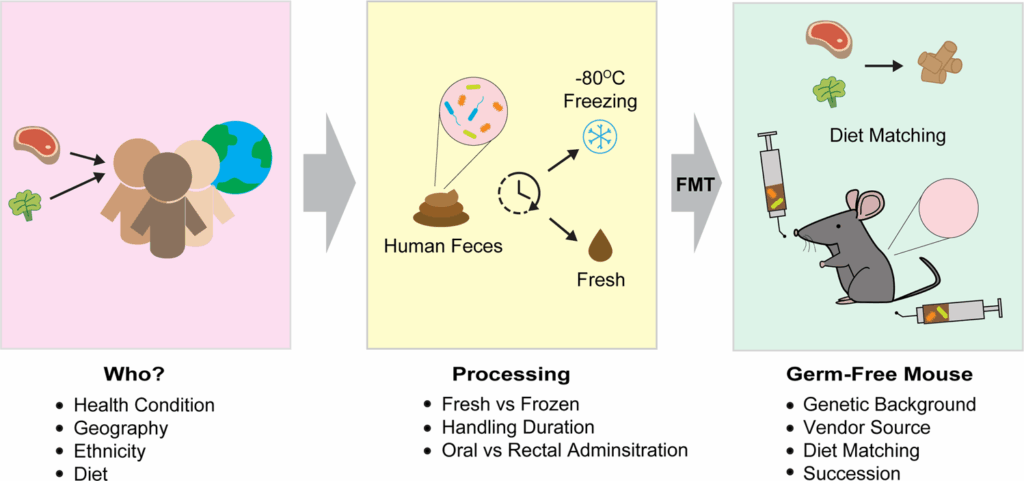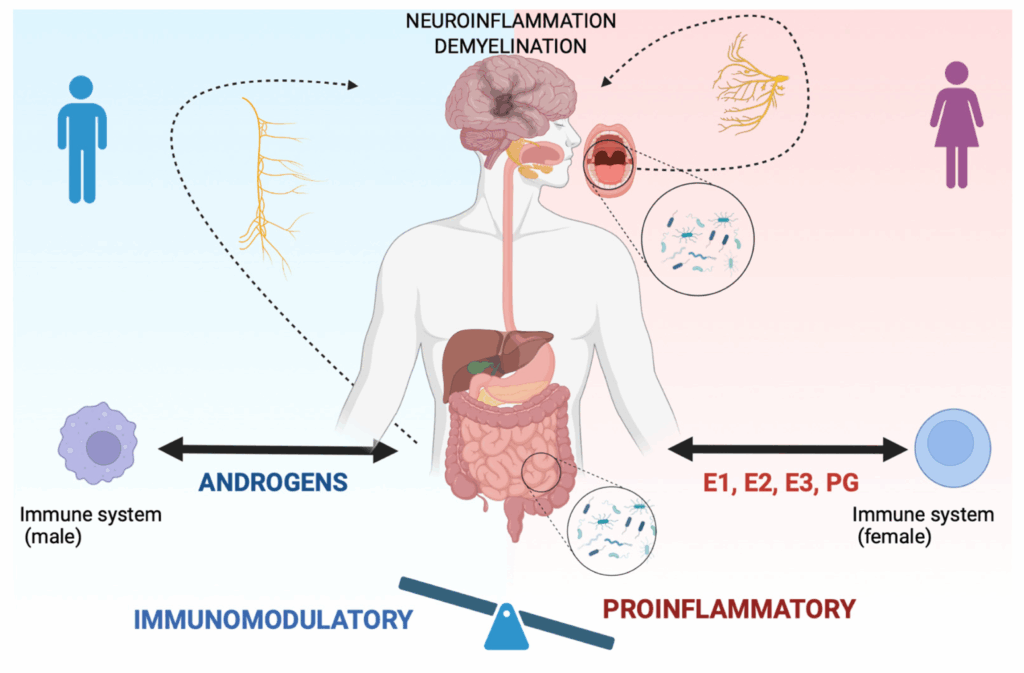Transferring Microbiota Into Mice: Proving Causality

To test whether these bacteria cause disease, researchers introduced microbiota from MS-affected twins into germ-free transgenic mice. Most of these bacteria were found in the ileum—the last part of the small intestine, right before it connects to the large intestine.
Results:
- Mice that received gut bacteria from MS twins developed experimental autoimmune encephalomyelitis (EAE), the mouse model of MS.
- Mice colonized with bacteria from healthy twins remained mostly healthy.
- “Researchers found that Eisenbergiella tayi and Lachnoclostridium may be connected to the early development of MS symptoms.
This functional approach moves the research beyond correlation, establishing a likely causal link between these gut bacteria and MS.
The Ileum’s Role in Immune Activation

Interestingly, the bacteria that triggered MS-like symptoms were not found in feces alone. Most of these bacteria were found in the ileum, the last part of the small intestine before it connects to the large intestine.
Why the Ileum?
- Home to a dense population of Th17 cells, which are known to drive inflammation in MS.
- Contains unique immune tissue (Peyer’s patches) that can react strongly to microbial antigens.
- Represents a “hotspot” for immune system–microbe interactions.
Sampling the luminal fluid and mucosal lining of the ileum revealed even higher concentrations of MS-associated bacteria compared to fecal samples—suggesting that fecal analysis alone may miss key disease-relevant organisms.
Female Susceptibility to MS: A Microbial Clue?

Interestingly, female mice were more likely than males to develop MS-like symptoms after being exposed to the same gut bacteria. This lines up with what we see in people—women get MS two to three times more often than men.
Possible Reasons:
- Hormonal influences on immune responses
- Sex-specific microbial colonization patterns
- Differences in gut permeability and immune cell populations
This finding deserves a closer look and could one day help pave the way for microbiome-based treatments tailored specifically for men and women.






